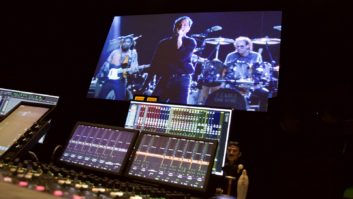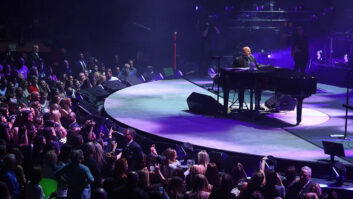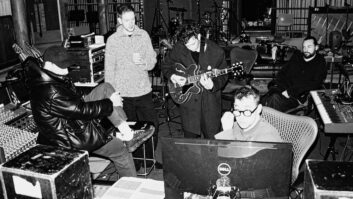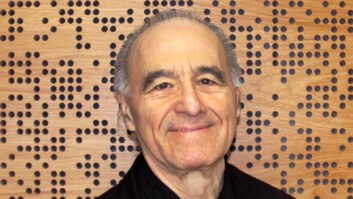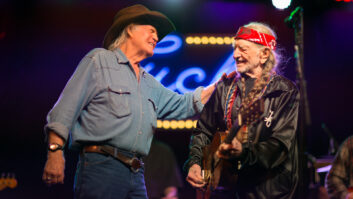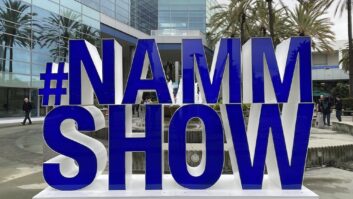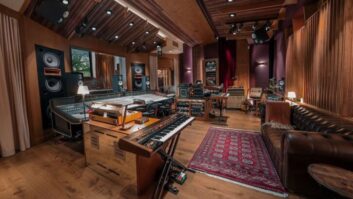New York, NY (April 23, 2024)—Who is Freddy Wexler? The answer you get depends on who you’re asking. To artists like Celine Dion, Diana Ross, Lil Wayne, Kanye West, Halsey and Marshmello, he’s a songwriter. For acts like Justin Bieber, Ariana Grande, Blackpink, Pink, Selena Gomez and plenty of others, he’s also a producer. In Hollywood, he’s a guy whose company has multiple film and TV projects on the go around town. And to Billy Joel fans, he’s a magician, having conjured the impossible: the Piano Man’s first proper single in more than 30 years, ending one of the longest artistic silences in pop history.
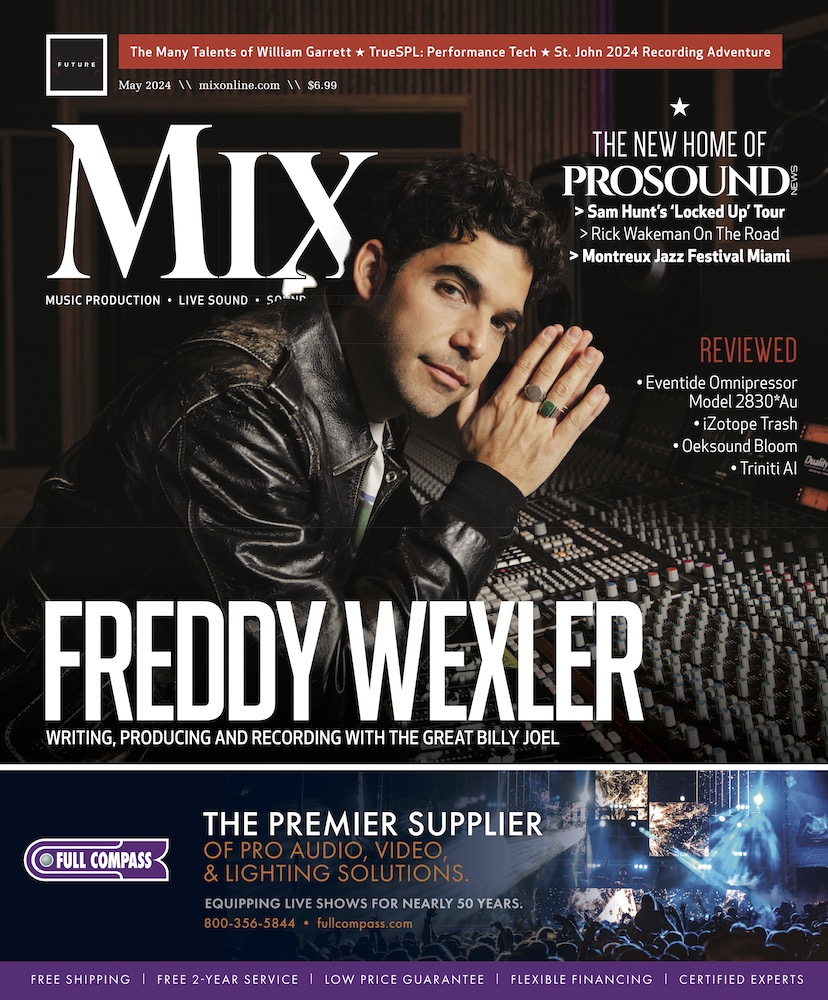
Logic Duality console inside his studio at
Evergreen Enterprise Experience in Los
Angeles. Photo: Ashley Osborn.
Billy Joel’s “Turn the Lights Back On” was an instant sensation when it was released on February 1, racking up 10 million global streams in a matter of days. Produced and co-written by Wexler, the track made its mark quickly, debuting at Number 1 on the classic hits and classic rock radio charts, opening on the Billboard Hot 100 at Number 62, hitting at Number 2 on iTunes, and more. That flame of excitement was only stoked further when Joel played the song at the Grammy Awards, marking his first appearance at Music’s Biggest Night in more than 20 years. Since then, “Lights” has become a welcome addition to his concert set lists, fitting in comfortably next to songs with decades of familiarity behind them.
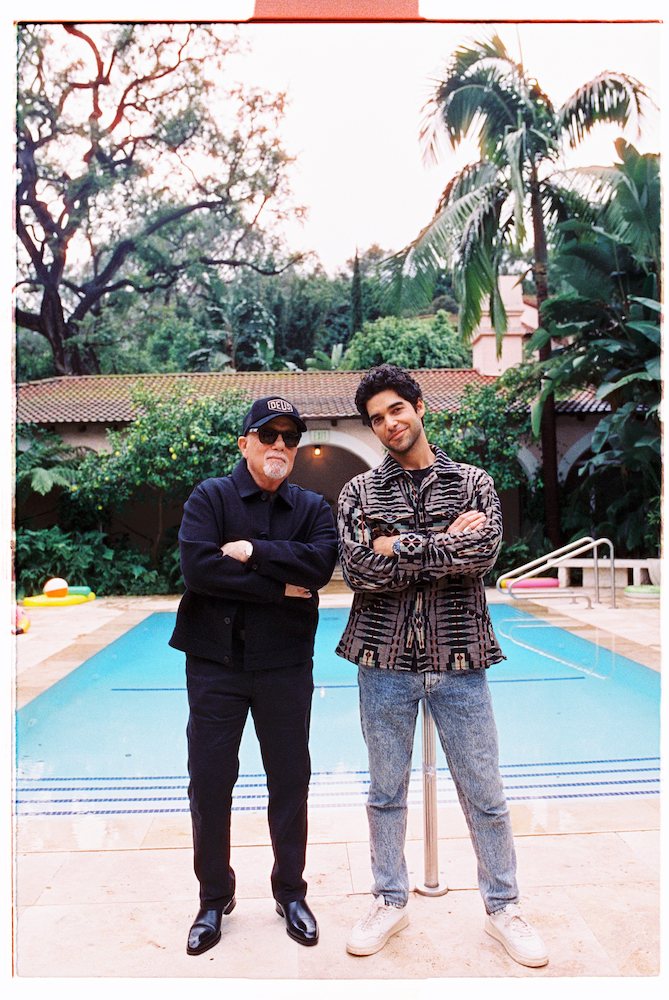
Billy Joel did not need a new single—at 74, he’s had a nearly 60-year career, sold more than 160 million records and had 33 Top 40 smashes. Unusually, that string of hits came to an end by choice: In 1993, Joel retired from songwriting after his 12th studio album, River of Dreams, driving the point home with its final song, “Famous Last Words,” which kicked off the chorus with “And these are the last words I have to say.” He meant it, too: Other than a few stray Dylan and McCartney covers, and “All My Life,” a one-off paean to old-school crooning quietly released in 2007, Joel’s only pop releases for decades were archival box sets and live albums.
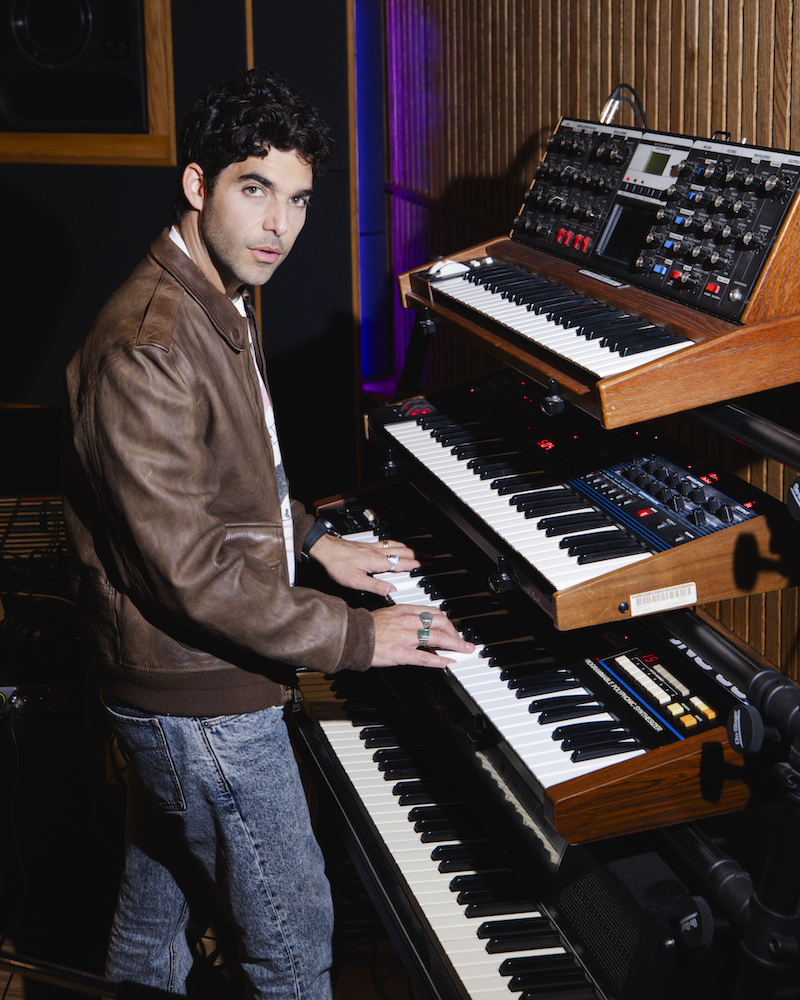
Wexler was still in the single digits when Joel swore off songwriting, but the artist’s work became a musical touchstone for him all the same. “Billy was the soundtrack of my childhood,” he says, “and growing up in New York, it hit extra hard because he’s a New Yorker. He truly is a classical genius and a wordsmith—and the reason I became a songwriter.”
That songwriting began early, and before Wexler was out of his teens, he was signed to Virgin Records, eventually recording an album that was scuttled by a label merger. Determined to move forward, he landed his first major co-write on Lil Wayne’s Tha Carter IV, and began building a resume as a songwriter and producer. Stops along the way included starting a group of publishing and management companies, and creating The Brain House, a music publishing commune…in an L.A. mansion. Music remained his focus, however, and the song credits began piling up, eventually leading to co-writing Justin Bieber and Ariana Grande’s 2020 pandemic duet, “Stuck With U,” which topped the Hot 100, hit 1 billion-plus streams and raised more than $5 million for first responders.
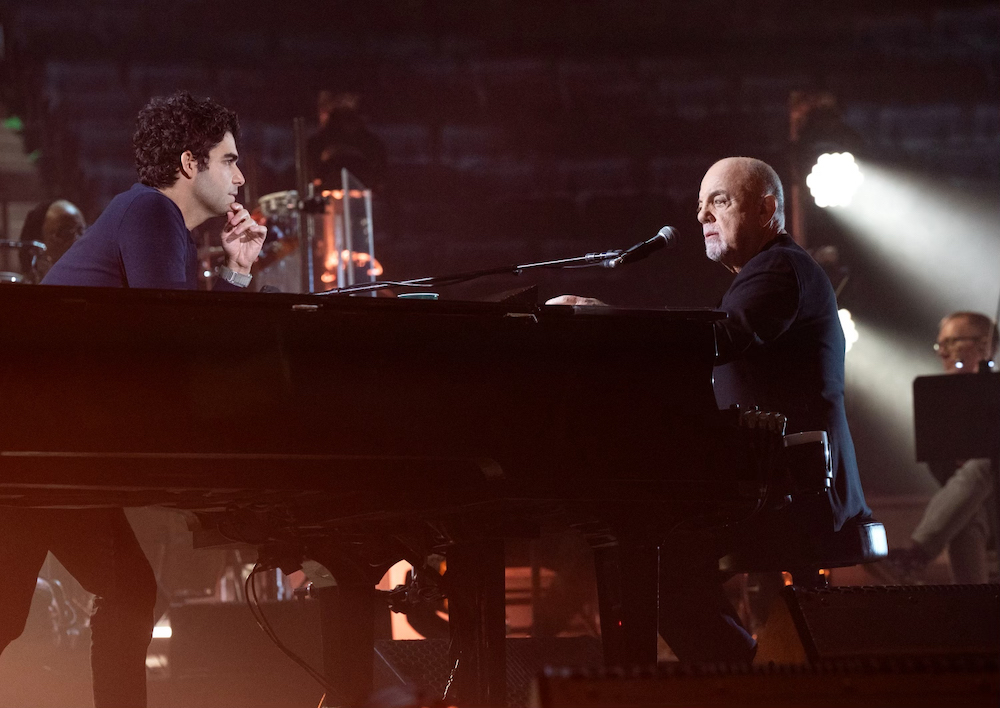
SCENE FROM A LONG ISLAND RESTAURANT
Ironically, it wasn’t Wexler’s track record that got him in a room with Billy Joel; it was his “kickass wife, Olivia,” he says. A music industry executive herself, she was determined to surprise him with the perfect birthday present—a lunch with his all-time musical hero—and spent much of 2021 trying to make it happen through every contact she had. Nothing came together, but then she discovered a slim connection through family doctors, and suddenly everything fell into place; the two songwriters met that summer at a busy eatery in Sag Harbor, New York.
“Billy thought he was meeting a kid and signing an autograph; it was clear he wasn’t planning on spending any time with me because he ordered his lunch to go,” Wexler laughs. “I had 10 minutes to change the course of that meal, so I just dove in, no small talk, and asked, ‘Have you ever imagined you were someone else while writing songs?’ It’s sort of an odd question, but that had become my process and I was curious if he’d ever experienced that, or if he was always just ‘Billy Joel.’”
Odd or not, the question immediately pushed the conversation in a new direction; as it turned out, Joel always imagined he was someone else while writing. Before long, the quick meet-and-greet turned into two pros talking craft and comparing notes. The lunch sprawled well past the 10-minute mark.
“Billy had famously stopped writing pop songs decades ago, but I selfishly wanted another one,” says Wexler. “About an hour and a half into that lunch, I said, ‘Billy, I don’t believe you’re done writing songs.’ He said, ‘You can believe whatever you want to believe.’”
Undeterred by the chilly retort, Wexler pressed on, asking if there were unfinished songs from the icon’s recording days—or perhaps from the decades since. Of course there were. Wexler volunteered to finish them off.
“He said, ‘I should let you finish them?’ I was like, ‘Why not? There are two possible outcomes. The first and most probable one is I do a horrible job, and the unfinished songs remain unfinished—but the other outcome is I do a half-decent job that even if not great, inspires you to finish them.’
“He looked at me and essentially said, ‘Come to my house right now, sit at my piano and play me the best songs you’ve ever written.’ So I did—and two days later, a FedEx arrived at my door with Billy Joel’s unfinished songs.”
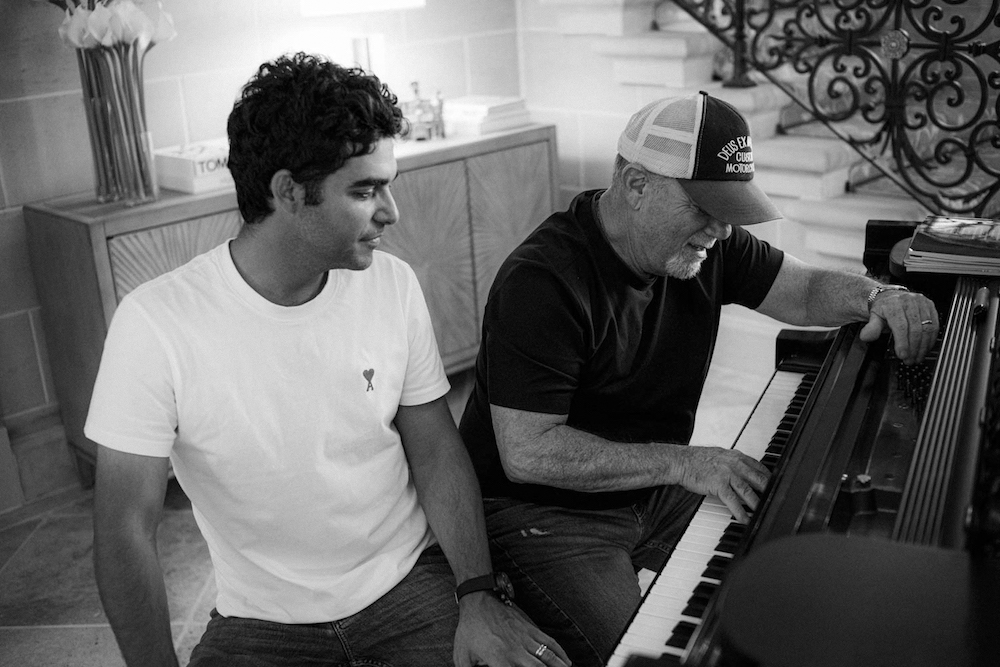
PRESSURE
The package’s arrival marked the start of an arduous creative journey as the two songwriters began working on the material. “I cannot stress enough that every step of the way along this two-year process, the whole thing could have imploded,” Wexler says today. “This was somebody who was at no point raring to get in the studio, and who moreover was indulging me. But I’d had cuts, a positive spirit and I was a real fan of his. I think he grew to respect me enough to keep entertaining the idea.”
The songwriters went back and forth about lyrics, melodies and titles as they worked on Joel’s unfinished songs. “Billy doesn’t blow smoke, so I got answers on email like ‘okay’ or ‘better’—but that made me raise the bar, made me write better lyrics and melodies,” says Wexler. “We started spending a lot of time together. I was going to many of his shows with him, our kids were hanging out—and about a year and a half into this, I played Billy one of my unfinished songs.”
The piece, written with Arthur Bacon and Wayne Hector, was “Turn the Lights Back On,” a grounded piano ballad about humility and rebuilding a stalled relationship. As might be expected from his songwriting process, Wexler says, “I was channeling Billy when I started it. I guess it worked, because when he heard it, he said, ‘That sounds like something I would have written. I feel like I’ve said those words before.’ Billy agreed to help me finish it, but when it was done, he was convinced we should send it to Adele! I almost fell off my chair. I said, ‘Well, I think you should cut it. It sounds like a Billy Joel song, it’s resonated with you enough, let’s at least try it.’ And he did.”
“Billy knows what he wants, and what he doesn’t want,” says Wexler. “For this song, he wanted a string quartet, but nothing that felt too self-serious or melodramatic. He also wanted a big, bright snare with ample space, but within a drum pattern that favored the twos and fours, not a waltz.” Photo: Blythe Thomas.
GET IT RIGHT THE FIRST TIME
The session was set for summer 2023 at Boathouse Studios in Water Mill, New York, not far from Sag Harbor. A small residential facility that Wexler uses mostly for his own projects, the John Storyk-designed space combines high-end gear and a low-key setting, and is centered around an 1890s Steinway Model B piano and a serene view of Mecox Bay.
Prepping for the session, Wexler made sure they were ready for anything: “Cian Riordan, an amazing Grammy Award-winning engineer, was with me, and we stayed up late the night before Billy recorded, getting sounds on everything.”
The goal of the session was to capture piano and vocal, so the Steinway was miked with Neumann U87s, going into 1073 mic pre’s, and then an Undertone Audio Unfairchild for light compression. Meanwhile, the vocal was another story: “I put up a vintage Neumann U67 and a vintage Beyerdynamic M 160 that I got in Germany since Billy had used that on previous records, but for the hell of it, we tried the mic that was patched in at the moment he walked in—a Telefunken ELA-M 251. I was convinced it would sound too pop for this, but as soon as I heard his voice coming through the speakers, I was sold; that was the mic.” The vocal passed through an Undertone Audio MPDI-4 mic pre and then the Unfairchild, making the most of a strong vocal that belied Joel’s 74 years.
“He did two piano takes, maybe three vocal takes, and it was clear to me that we had it,” says Wexler. “His tone was amazing—his voice is like a bottle of red that gets better with age. I ran into the vocal booth after he recorded his first take, and I was bugging out with excitement. I jumped in, put my hands on his shoulders, kind of shook him gently and said ‘Billy, Billy, how does it feel? It sounds incredible in there!’ He looked at me and said, ‘Feels like singing, I guess.’ To me, this was Billy Joel! To him, it was just doing what he does.”
Classic Tracks: “My Life,” Billy Joel
The recording process had changed dramatically since Joel recorded his last pop album, but only for the better. Wexler explains, “Modern technology allowed us to keep it fun because it was fast, and that made it easier for somebody who was not raring to record. We had a good time. If you ask him, he’ll say, ‘It wasn’t painful’ or ‘I didn’t hate it’—which is praise coming from Billy Joel.
“What was amazing is that after hearing the vocal, he called me and said, ‘Hey, I want to come by and give you a couple more takes,’ even though he’d already given me such great stuff. It was cool watching somebody go from ‘I don’t really want to record’ to ‘Let’s make this great; I’ll come back’—and suddenly, there’s Billy Joel on a motorcycle, showing up at my house.”
That gradual shift was aided by the crucial first listen to the track: “I mixed and mixed for a week, then called and said, ‘Hey, I want you to hear the song; I’m gonna drive to your house because I want you to hear it in my car.’ My wife said to me, ‘You can’t just send it to him? It’s Billy Joel!’ I said, ‘No, I don’t know what his speakers are like!’ So he got in my car, listened to it, and said, ‘I don’t hate my voice on this.’ At that point, I was just hoping he’d want to put it out, so I said, ‘You don’t even have to play it live if you don’t want to.’ His response was, ‘If I’m going to release this, I’m going to need to kick the crap out of it with my band,’ because to him, if it doesn’t work live, it doesn’t work. So that was it—from that moment on, we were gonna put this out; the question was how.”
THE LONGEST TIME
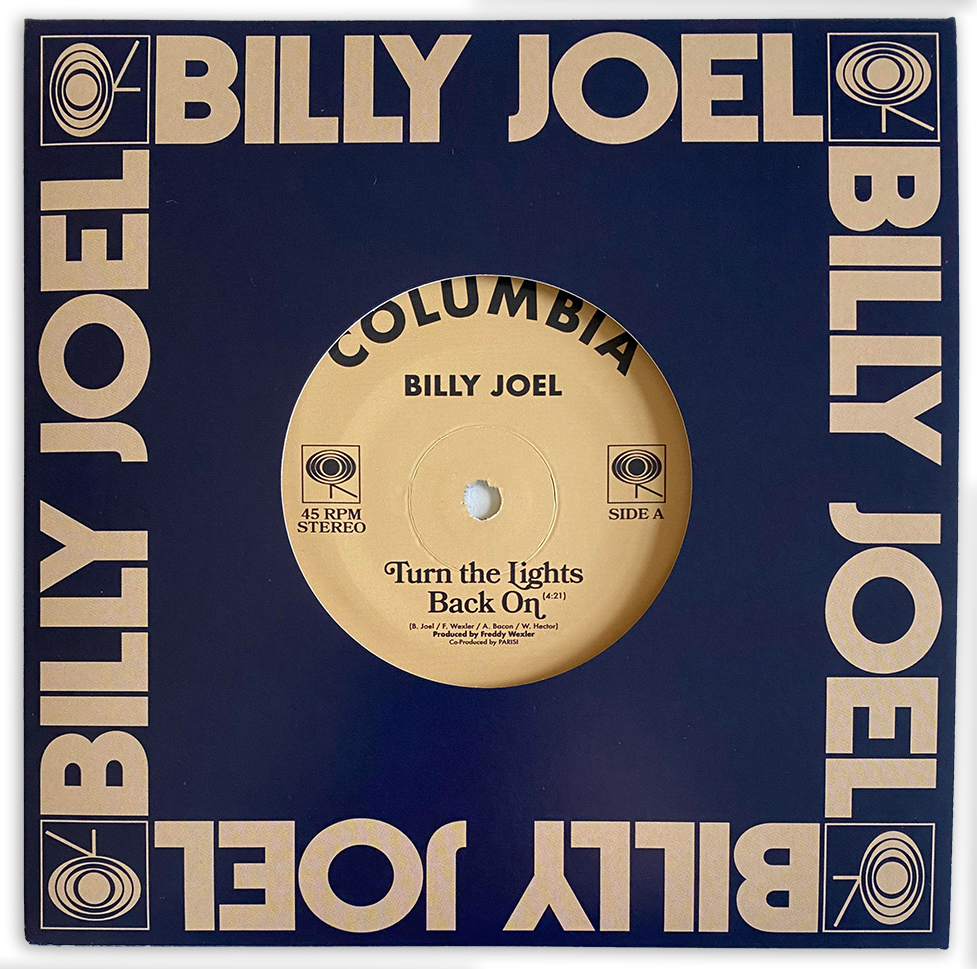
The record was still far from complete. While the song recalled Joel’s hits on 1970s radio stations, it needed to fit in on 2020s streaming services. “I wanted it to work for today’s listeners,” says Wexler, “and I knew that would depend on sonics. Obviously, you don’t do some crazy modern production trick, but sonics make a big difference—and yet they still had to feel authentic to Billy Joel.”
The track began traveling the world. New Zealand producer/guitarist Leroy Clampitt added guitars. Canadian drummer Randy Cooke took the existing programmed drumbeat and played a far more sparse variation on live drums. Producer Emile Haynie added textures, while Italian production team Parisi (Ed Sheeran, Fred Again, The Kid Laroi), comprising brothers Marco and Giampaolo Parisi, got involved in creating atmospheric soundscapes, becoming co-producers on the record. Marco Parisi teamed with David Campbell to arrange the strings, which were then recorded in Los Angeles by the Calder Quartet through a Neve 88R at The Village Recorder, followed by overdubs at Evergreen Stages tracked in a traditional live room and a massive chamber to achieve the blend they were after.
“I wanted to create something that felt like a classic Billy Joel-style record; to me, that meant voice and piano, front and center, and in this case, strings and drums just behind,” says Wexler. “What I took my time with was finding the glue to connect those elements. It may sound like a single pad underneath, but if you solo the elements one by one, there are probably 30 tracks somehow working together—pads, feedback, atmospheric sounds—to create that glue.”
Herding all that together was veteran mixer Tom Elmhirst (Adele, Lady Gaga, David Bowie), assisted by Adam Hong, who went through 20 revisions to get the mix where it needed to be, but Wexler notes that they and mastering engineer Randy Merrill “knew how historic this was, and we all wanted to get it right.”
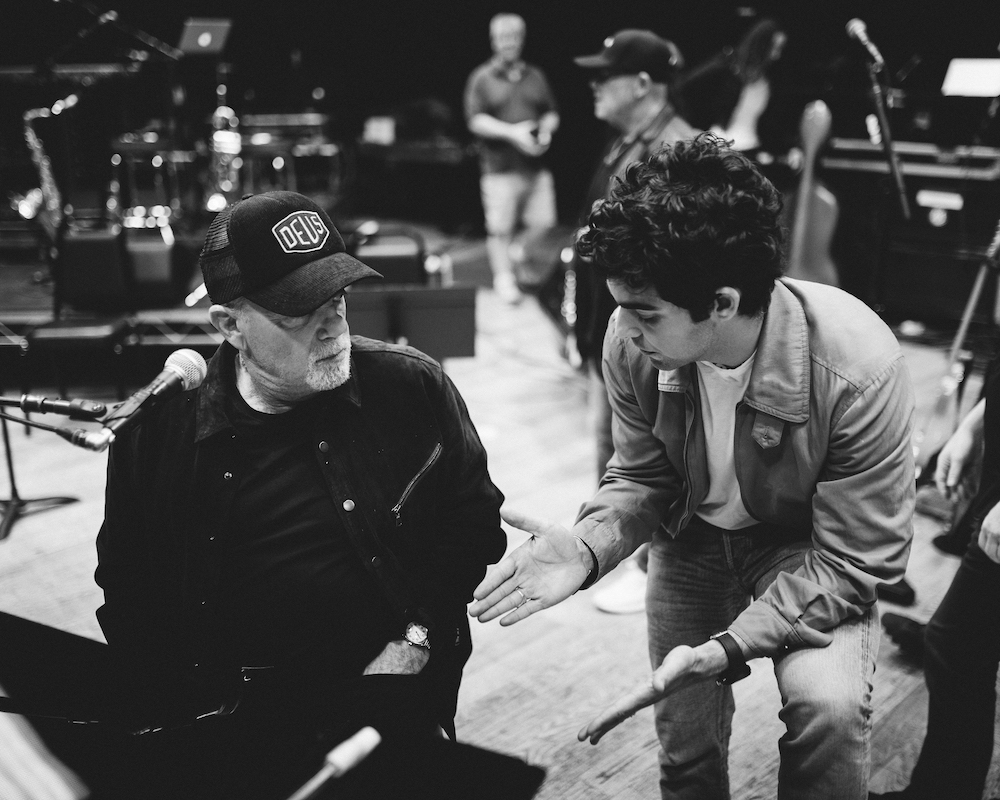
A MATTER OF TRUST
With the song ready to roll, Joel hired Wexler and his media companies in a very different capacity: to manage the track’s release with the two conferring on most aspects of the rollout—the 7-inch vinyl sleeve, multiple music videos, the Grammys appearance and more.
In the wake of the critical and commercial success that followed, it’s fair to wonder if more music might be on the way. Well, Joel has a summer of stadium shows and the end of his decade-long residency at Madison Square Garden to contend with, while Wexler is working with newly Grammy-winning Icelandic jazz artist Laufey and other artists who can’t be discussed, so both songwriters have their hands full at the moment. But afterward? No one really knows.
“It was an organic first step, and I think the possibilities are endless with what could happen now,” says Wexler. “We talk all the time about ideas and lyrics, and we’re still working on things. I think as long as it stays fun, then I’m pretty hopeful.”
